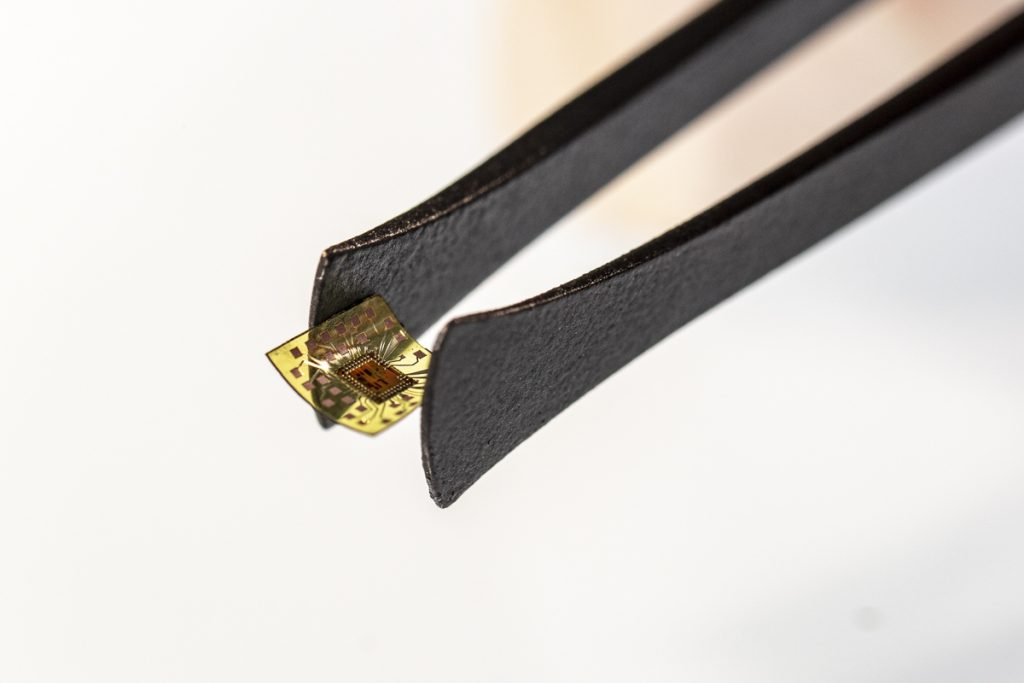Flexible electronics for medical technology – Intelligent sensor technology through integrated evaluation ASICs
Veröffentlicht am

IMS CHIPS Newsletter 2/2021
Flexible electronics for medical technology - Intelligent sensor technology through integrated evaluation ASICs
Intelligent sensor technology through integrated evaluation ASICs

Evaluation ASICs made by IMS CHIPS integrated in flexible foil systems with bending sensors create new solutions for medical technology. The small electrical signals deriving from bending sensors in thin and flexible polyimide foils are evaluated and digitalized by ASICs, which are integrated directly next to the sensor arrays in the foil. The ASIC chips, which are only about 30 μm thick, are embedded in the chip-film patch foil (pictured above), bonded to the large-area sensor array and contacted via metal connections.
This enables the analysis of the breathing of premature infants through a film patch attached to their chest and allows targeted drug delivery by inhalation. The risk of harmful overdoses during inhaled drug administration in this critical phase of life is minimized and the chances of healthy survival are increased.
Researchers at the Fraunhofer Institute for Toxicology and Experimental Medicine (ITEM) were able to capture respiratory cycles through photographic data acquisition on a premature infant model and match them with sensor data to ensure respiratory triggering of drug delivery. The flexible sensor patch on the infant‘s chest barely interferes with the mobility.
The Flexmax project covered another important application of flexible electronics with the development of a sensor system for cardiac catheters. A sensor-based motion control of cardiac catheters, which will be used by the medium-sized catheter specialist Osypka for future products, requires near-location and highly sensitive measurements and digitization of the sensor signals, just like respiratory triggering. A particular challenge in endoscopes and catheters, of course, are the space limitations and mounting requirements for the complex sensor system. The ASICs, which are barely wider than 0.5 mm and less than 30 micrometers thick, measure the signals from four bending sensors each; a total of seven to eleven such sensor elements are needed for the motion control of an ablation catheter for heart disease. Data from the demonstrator test and further studies with users will show the extent to which the use of the new technology can reduce the time required for X-ray visualization and thus the radiation exposure for the patient.
Contact:
0 Comments